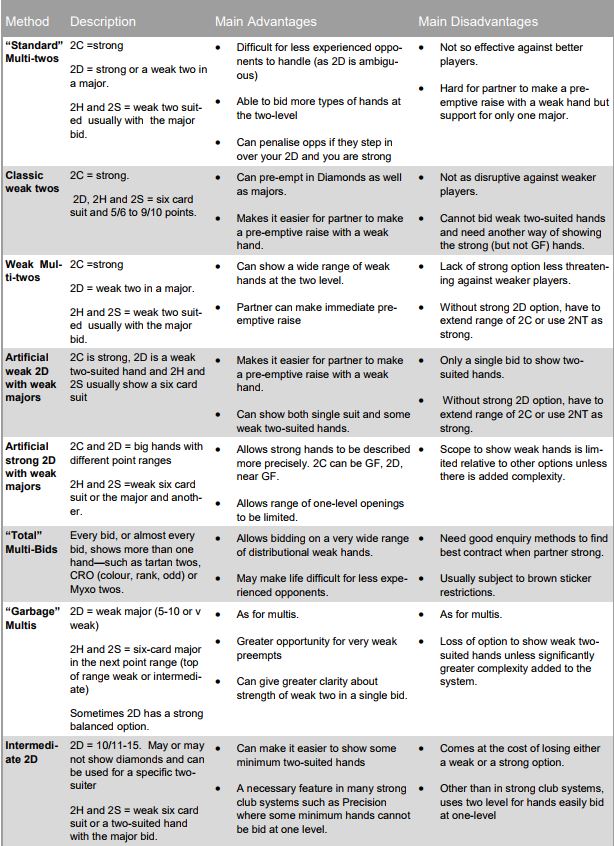 Bulletins
Overall, the main difference between the system of a top pair and an intermediate or novice pair is not so much that they have more gadgets or even different gadgets. The system may not be ifferent at all.
The real difference, the most important difference, is that the top pair will almost certainly understand their system better.
Understanding your system means many things:
Bulletins
Overall, the main difference between the system of a top pair and an intermediate or novice pair is not so much that they have more gadgets or even different gadgets. The system may not be ifferent at all.
The real difference, the most important difference, is that the top pair will almost certainly understand their system better.
Understanding your system means many things:
• The choice of methods has been based on a careful comparison of the advantages and disadvantages of different approaches; and the one chosen is the lesser evil which fits best with the style of the players.
• Knowing when to use a gadget – just because you can bid in a certain way because you have the right number of cards and points doesn’t mean that you have to or should. Different situations, such as vulnerability and bidding position, create different considerations.
• Clarifying the fine detail and applying good judgment to hands at the margin. What is a “good suit”, what is the worst suit you can have and still open etc?
• Knowing what to do next – and beyond. Understanding in detail not only the responses to a bid but the responses to the responses and so on.
• Knowing what to do when there is interference – what to do when opponents stick a preemptive bid in the middle of your beautiful enquiry sequence or double.
• Understanding the implications of the chosen method for other parts of the bidding system – no bid is an island unto itself. This is also the ability to make inferences from what is not bid –the significance of the dog that did not bark.
As a theme for this year’s  Bulletins, we thought we would go back to basics with weak twos. We have put together some tables, starting with the one below, that summarise the main approaches to both opening bids and responses, their advantages and disadvantages, and some of the nuances around when to bid them.
Trying to classify weak twos (or any other level of bidding) into a few categories is a fraught exercise.
The number of different approaches is huge and there are variations within each – to get a sense of the scale of different approaches, you can go to Chris Ryall’s Weak Two Archive on the web. In trying to categorise even the more common approaches into a few main type, a fair bit of judgment and “shoehorning” is involved.
Bulletins, we thought we would go back to basics with weak twos. We have put together some tables, starting with the one below, that summarise the main approaches to both opening bids and responses, their advantages and disadvantages, and some of the nuances around when to bid them.
Trying to classify weak twos (or any other level of bidding) into a few categories is a fraught exercise.
The number of different approaches is huge and there are variations within each – to get a sense of the scale of different approaches, you can go to Chris Ryall’s Weak Two Archive on the web. In trying to categorise even the more common approaches into a few main type, a fair bit of judgment and “shoehorning” is involved.
2X Tables 1: Common Opening Two Methods


























